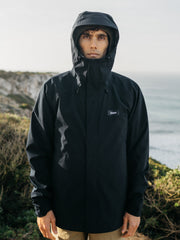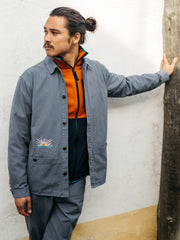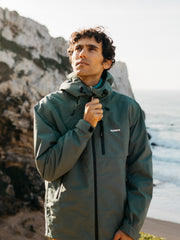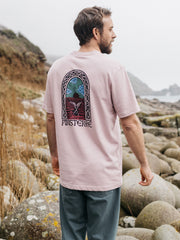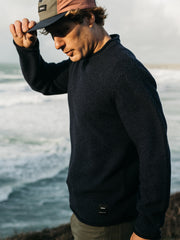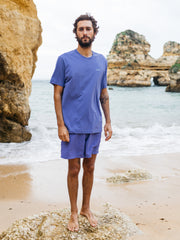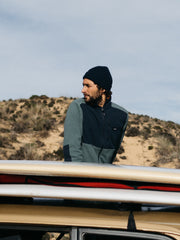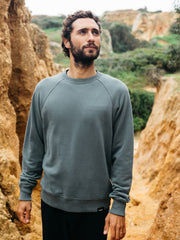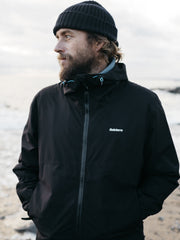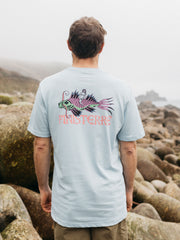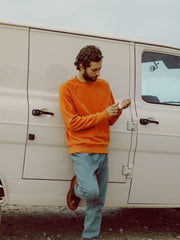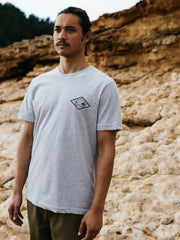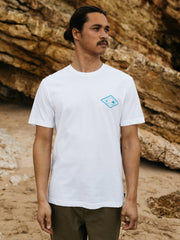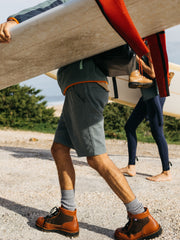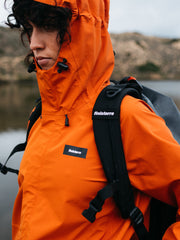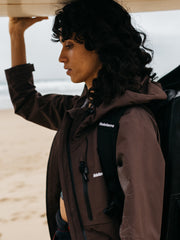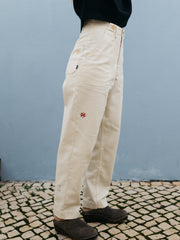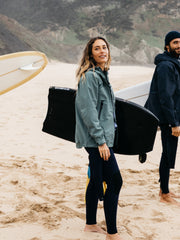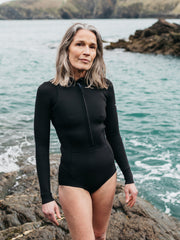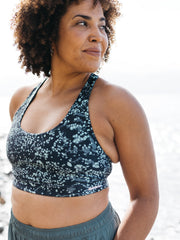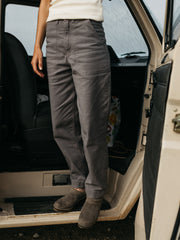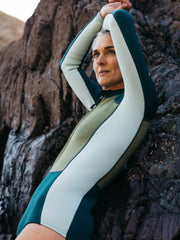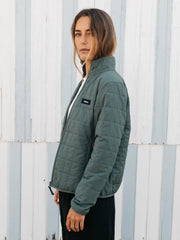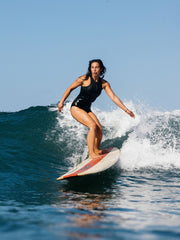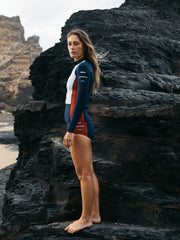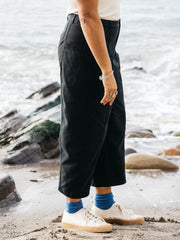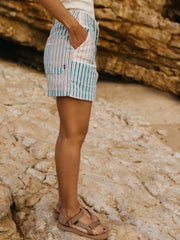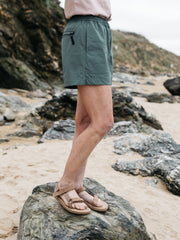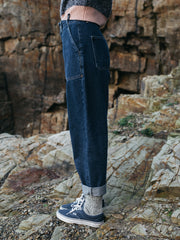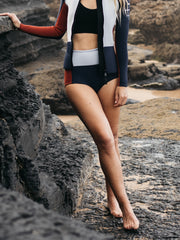Having returned to land after three years at sea in the last instalment, we checked in with Lou Luddington on the Pembrokeshire coast. As she continues her transition back to stationary living, she reflects on the change and continuing to find solace amongst local wildlife offshore.
Ground Rush
15.08.23
4 min read
Words & Imagery by Lou Luddington
Waiting patiently for the sun to scoot from behind a cloud, I fill my lungs and dive down so I can be among the kelp as it catches fire. Backlit their fronds set the whole scene ablaze, flowing bronze and lavish in their spring growth. Gripping on to a kelp at the base I hold tight to counter the upward pull of my wetsuit’s buoyancy. I am anchored, swaying with the seaweed in the swell and feel the familiar peace and quiet calm that comes with breath holding underwater. Spider crabs clamber up the kelp stipes snipping off red and green seaweeds to snack on and a chunky wrasse coloured amber to match the scene, eyes me then slips among the tangled fronds. I’m back and in love again.
Grounding in the aftermath of a huge life shift from rooted land life to a nomadic life at sea and back again has been a slow rain, like a dandelion seed drifting and parachuting to earth. After the euphoria of a celebrated homecoming seeped away we slotted into a new life. Having sold our house to fund the great sea voyage, our home is now a rented flat on the third floor of a manor house with a view at tree canopy height, of lawns, flower beds and fields with cows and the broad sky. In our imaginations it is a treehouse without the bob and sway akin to liveaboard life. I’ve wondered a few times if this elevated living has delayed the settling of my emotions, when another day of anxiety consumes me for no reason. At these times I have turned to my natural surroundings for therapy; out on the coast among familiar birds, flowers and seaweeds and at sea in the waves, I feel so joyous and open-hearted. Having had a break from surfing for a few years, I've fallen in love with wave riding again too. It's been years since surfing made me feel this uplifted- what a gift! Reacquainting with familiar wildlife and cherished places has been golden, a splendid affirmation that we are home, at heart-centre
These days I don't sleep or cook, or sit at my desk at sea; like most folk I go to my house on the land for these daily activities. Instead I go to sea as a wildlife guide to share the joy of Pembrokeshire seas and islands with others. Working with Celtic Deep and Falcon Boats I’m either snorkelling with puffins or crewing on tours of Ramsey Island and beyond. I return to land with salt encrusted eyebrows, a burn in my cheeks and gaze drawn seaward, eyes never quite settling in their search for wild ocean creatures. My thoughts are absorbed by marvellous seabirds- gannets, puffins, razorbills, guillemots, fulmar petrels, shearwaters, kittiwakes- that visit our local shores once a year to breed before returning to their maritime lives of ocean wandering. Some make huge migrations, crossing oceans as a routine journey, whilst others whip down to the Bay of Biscay or the Med then cruise north to Greenland on a gastronomic tour of winter fishing grounds.
Although I’m starry-eyed for the Atlantic puffins of Skomer island and the plunge diving Northern gannets of Grassholm island, my local heroes are the Manx shearwaters. Half the world's population arrive in Spring to nest on the Pembrokeshire islands numbering more than 450,000 breeding pairs. Yet if you visited the islands by day you’d never guess but for their gory remains strewn along the paths and a honeycomb of burrows in the earth. As masters of open ocean living they are crafted with long stiff wings for efficient, soaring flight and webbed feet set far aft for paddling and lift off from the water surface. These rear set legs do not suit walking on the land, instead the birds are forced to squirm on their bellies propelled by folded wings. This limited mobility makes them an easy target for burly predators like Great black-backed gulls. Their solution is to spend daylight hours far offshore fishing, only gathering near the coast again at dusk. Here they float in great rafts by the thousand, waiting for nightfall to conceal their return, calling to their partners secreted underground in earthy burrows with a single egg or chick.
Wave shearer, water slicer
Angling through valleys of brine
Wandering for life
Feathered Marina, Haiku poem about shearwaters, written aboard Noctiluca mid-Atlantic on our trans-Atlantic crossing.
After 70 days in the nest burrow the chick sets off on its maiden flight alone, having been abandoned by its parents a week earlier. It must find its way to South America, an immense odyssey of 6000 miles along a sea path never flown before. Guided by airborne particles that make up an olfactory map across the ocean’s surface, its incredible sense of smell draws it on towards rich feeding grounds in the southern hemisphere.
As I settle back to life on land, I am in awe of how these birds switch between lifestyle extremes, from ocean wandering storm riders to subterranean island dwellers, hunkering in the earth. Perhaps their transition each year is a little fraught too, either way their life story is a powerful reminder to find joy and purpose in the present moment. Time spent appreciating nature can move us from anxious mind to loving heart and ground our emotions, an effect I have felt deeply over the past months.


